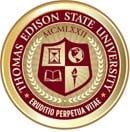Close your eyes and picture a course that has no guide or textbook to help you study, because all the material you needed to know – you already knew. All the life and work experiences you needed to understand – you already did. There are no tests or quizzes, and at the end, you earn college credit…. Sounds like a dream course, a fantasy we all drum up when work, life and school blur together into one seemingly endless challenge.
Except it isn’t. This dream that you dare to dream, is really true; it exists and it’s real.
That’s the idea behind portfolio assessment. Like many of adult students, you may be surprised to find that you already have knowledge in multiple subject areas from a lifetime of learning that can be applied toward your degree. That college-level knowledge acquired outside the traditional college classroom is valuable because it may be your ticket to earning college credit.
In PLA-100 and PLA-200, you will learn how to develop a portfolio to potentially earn credit for the college-level knowledge you have, equivalent to what would have been learned in a comparable college course. The difference is that your learning took place as a result of employment, independent study, training programs, volunteer services, cultural pursuits, hobbies, study abroad, and much, much more – so if you can earn credit for any of that, it’s a no-brainer!
To get started, first assess if you are a good candidate for portfolio assessment. As a working adult, chances are you have several areas to draw from. Until you learn how it’s done, building a portfolio can seem like a daunting task. Once you learn how, the benefits can help you in academic, professional and personal ways for a lifetime. Here's why.
Academic
To learn how to build your portfolio, you take the accelerated PLA-100 and PLA-200 courses, a course sequence that helps you through the process of documenting your learning. These are credit courses, so you get credits for learning how you are going to get credits! These courses guide you as you create one or multiple portfolios; the average Thomas Edison State University student ends up earning around 12 additional credits through the portfolio process, and you could earn even more than that. (BONUS: An added benefit is the new cost structure for portfolio assessment, which could save you money.)
Personal
Every day we are bombarded with information, and are constantly absorbing information through a mix of venues; we are internalizing a huge bank of learning. So how can you assess what is college-level knowledge? In creating a portfolio, you go through a significant amount of self-reflection and introspection to identify what you know as a result of your learning and experiences. As you review your competencies, knowledge and background, you may identify other areas of expertise you never thought about.
Professional
Your background is extensive, so wouldn’t it be incredible to show it off in one, well-organized place? Building a portfolio will help you develop lifelong learning skills that are great for your career, particularly as it can help you define a specific role, position or job description. A portfolio can also showcase your capabilities and accomplishments to a potential or current employer through your collection of evidence and detailed explanations of what it all means. A professional portfolio can add breadth and depth to your resume and your job search.
More than a course or a method for earning credit, portfolio assessment is a process that will benefit you as you navigate the new future you are building for yourself. As a Thomas Edison student, you already have the drive and determination to accomplish your goals, and you may already have the college-level knowledge it takes to get there.
Like Glinda says at the end of The Wizard of Oz, “ you’ve always had the power.” You just need to tap into it.

Written by Thomas Edison State University

